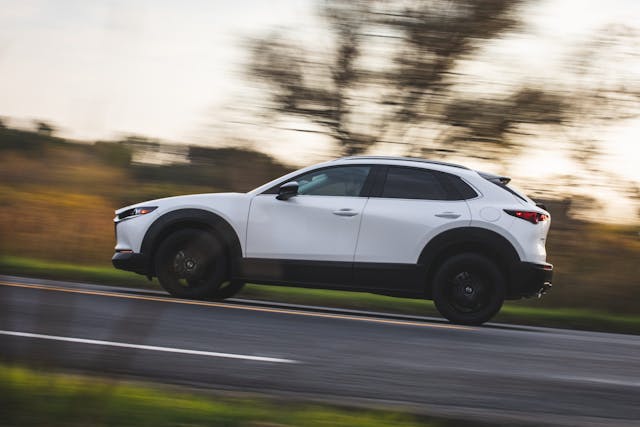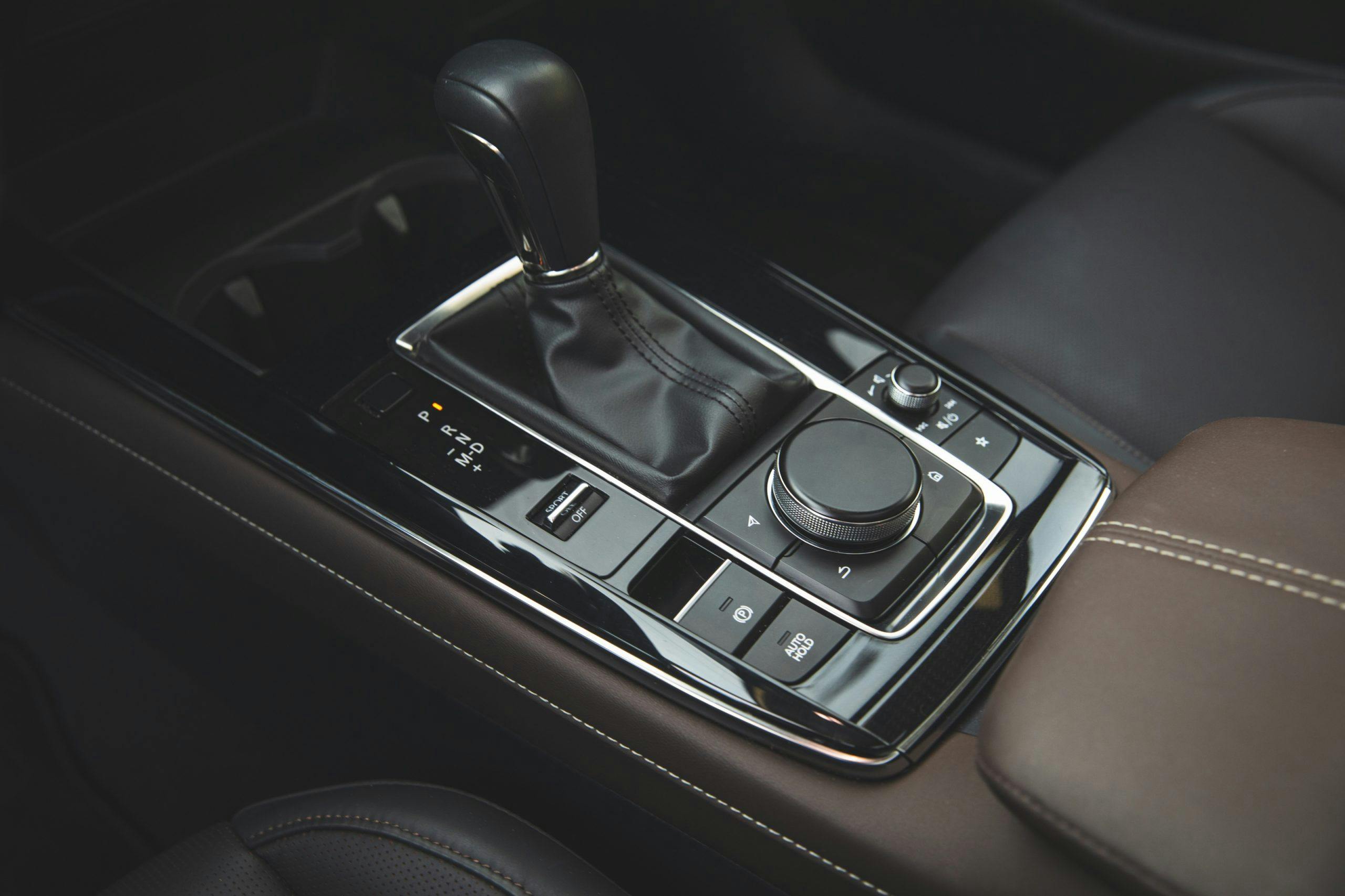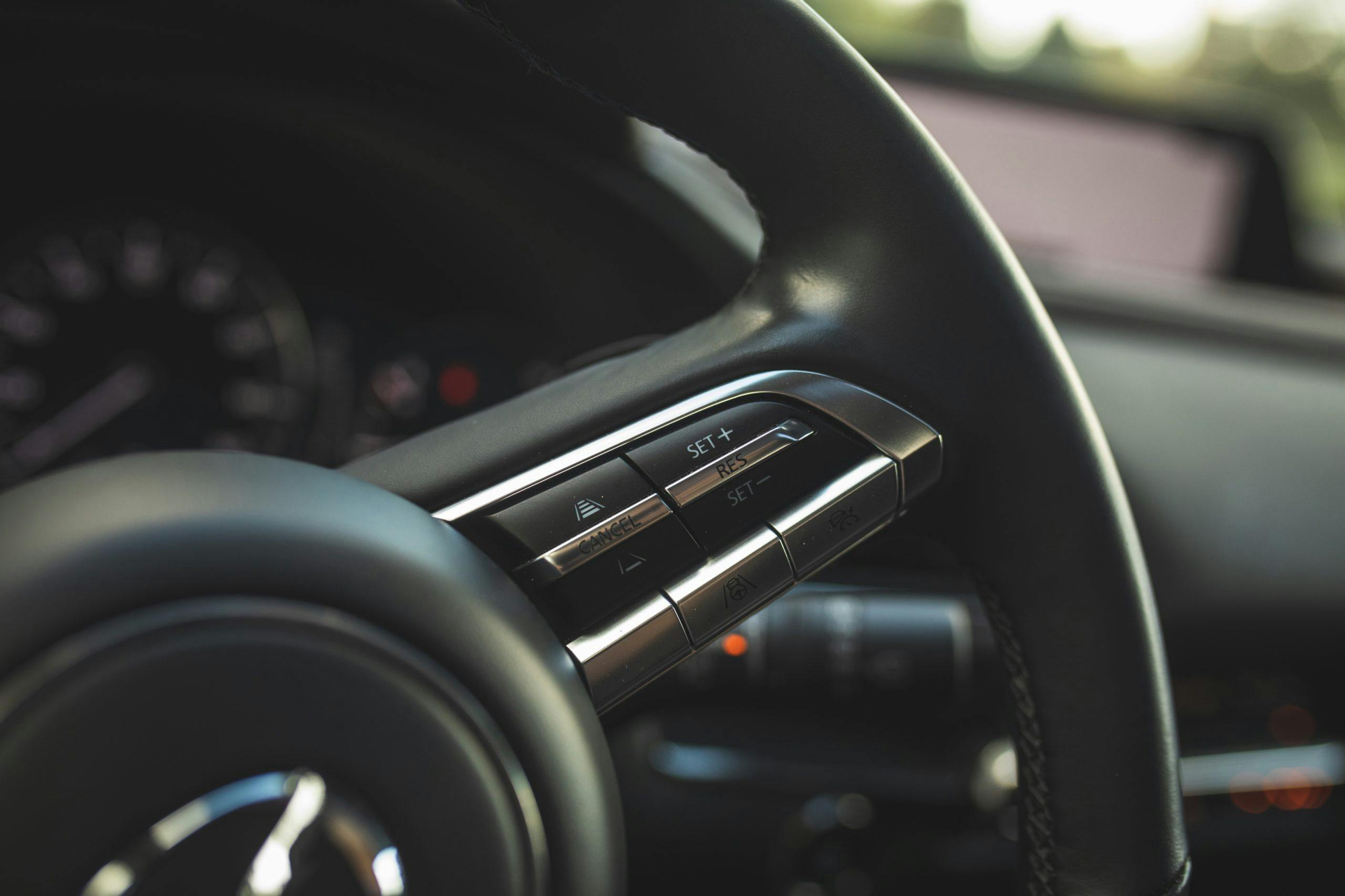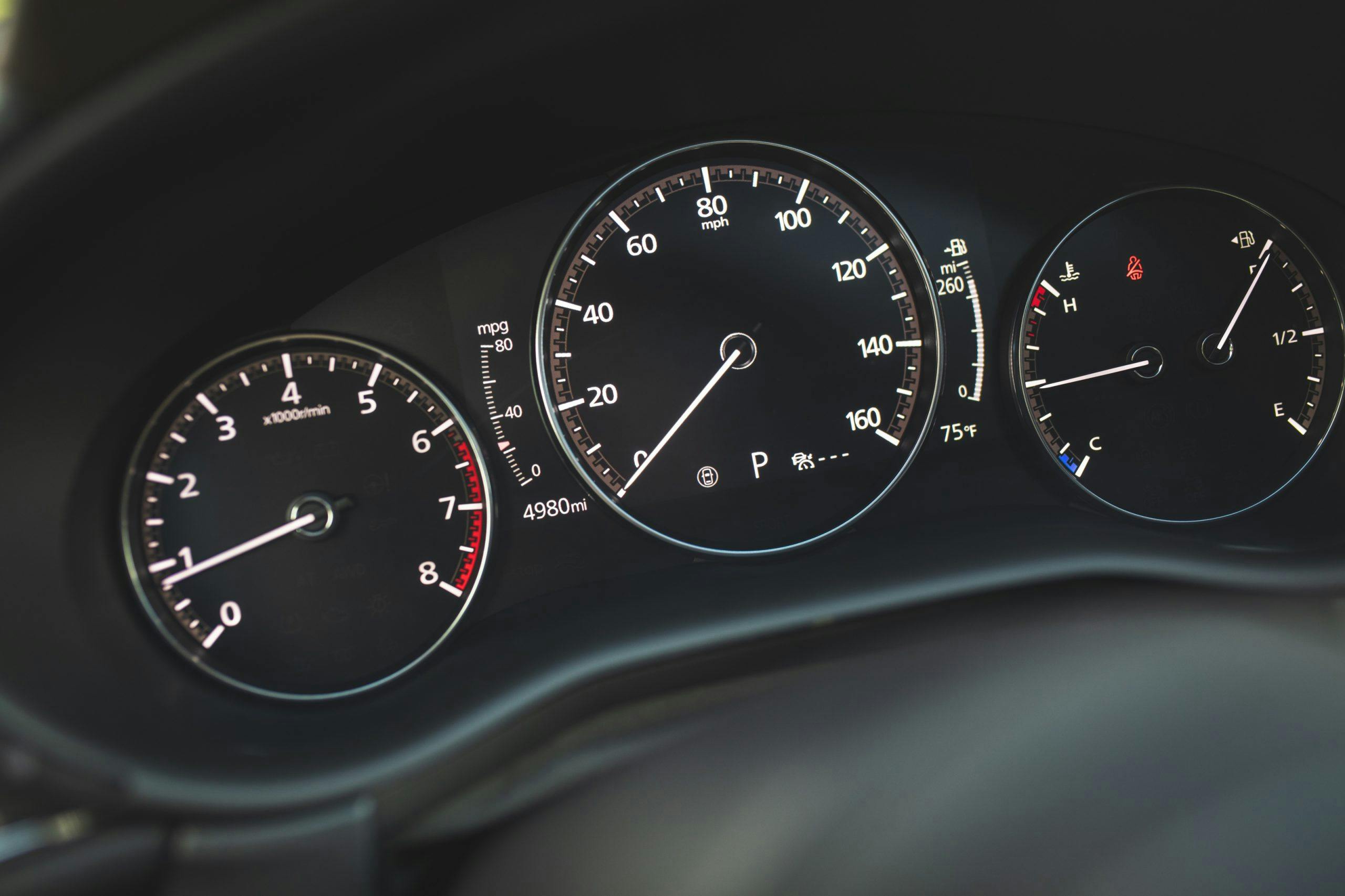Media | Articles
Review: 2021 Mazda CX-30 Turbo Premium
While waiting in the pickup line at my daughter’s school in my late-model Mazda 3 hatchback, I like to play a little game: I count the number of crossovers (always lots) and the number small hatchbacks (always just me). Next, I feel quietly superior.
Um, yeah, that’s pretty much the whole game.
Moral superiority—no matter what morals you subscribe to—seems to be a popular feeling in America at the moment. Also a pointless one. To wit: Of the 20 top-selling vehicles in this country in 2020, 16 were trucks, SUVs, or crossovers. The fact that many car enthusiasts consider a small hatchback to be a kind of platonic-ideal daily driver is unlikely to change hearts and minds.

With that awareness, we might consider the Mazda CX-30. For those fluent in SUV vernacular, it slots neatly between the aging CX-3 subcompact and the popular CX-5 compact and will no doubt be cross-shopped with a raft of small, fashion-forward crossovers, from the Hyundai Kona to the Chevrolet Trailblazer. Yet its closest relative is likely my beloved Mazda 3 hatchback, which was redesigned for 2020 and is nearly indistinguishable from the CX-30 in terms of price, footprint, and powertrain offerings. The new 3 can even be had with a turbo engine and all-wheel drive. What could a crossover version possibly add?
The smugly satisfying answer would be “Cladding.” Yet the better response, keeping in mind Americans’ overwhelming preference for crossovers, is to ask a different question: What does the CX-30 give up? The answer, reassuringly, is not a whole lot.
Marketplace
Buy and sell classics with confidence

Like the new 3, the CX-30’s styling is an exercise in elegance. The gray cladding and a slightly raised ground clearance say “off road” but don’t shout it—think old-school Subaru Outback or, closer yet, how Audi distinguishes its Allroad variants from Avant wagons. A convex curve along Mazda’s beltline adds visual length, disguising the stubbiness inherent in a tallish, transverse-engine compact. The overall impression is less cute-ute than miniaturized luxury SUV, although that might be giving too much credit to the current state of luxury design. Indeed, many top-tier SUVs, bedazzled with mine-is-bigger grilles and overwrought detailing, could learn from the unfussy way this Mazda conveys “premium.” Not bad for something that starts for less than $25K and, even in loaded media fleet form, stickers about seven grand shy of the today’s average new car transaction price ($35,795, versus a national average north of $42K, per Kelly Blue Book).
The interior likewise punches well above the price point. Mazda, which has at times trailed in the electric doodad department, has caught up here with nice-to-have features like rain-sensing windshield wipers, a power tailgate, a 360-view camera, and a heated steering wheel. Materials and controls likewise feel up to real-deal luxury car standards. The BMW iDrive-like controller flips through on-screen menus intuitively, although new users might find a learning curve. One oversight: The 8.8-inch display is not also a touchscreen, which some upscale customers might find disappointing.
An area where the 3 hatchback does not impress is interior space. You’d think fixing this would be the raison d’être for an SUV variant. The CX-30 does have a smidge (0.1 cubic feet) more cargo room than the 3, is slightly roomier in back, and is of course easier to climb into. On the whole, however, it remains a tight squeeze for more than two passengers in the back seat. Traditionally styled competitors like the Honda HR-V make use of their boxiness to eke a bit more room for people and stuff. My wife, who regularly says she has no legroom in our 3 on account of the child seat in back, voiced the same complaint in the CX-30.
Fortunately, the 3’s stellar driving experience also carries over. In classic Mazda fashion, zen is achieved largely in spite of, rather than because of, the hardware. The automatic has six speeds, whereas many competitors offer eight or nine. The 250-hp turbocharged four cylinder feels plenty quick—a decade ago it would have come with a Mazdaspeed badge and a wallop of torque steer—but by our warped modern standards is not exceptionally so. The rear suspension, as on the latest 3, is a simple torsion beam. No matter; the steering is as precise, communicative, and nicely weighted as you’ll find on a modern vehicle, regardless of price. The suspension feels athletic and well damped, not harsh, the brake pedal firm and linear. The transmission, particularly when toggled into sport mode, keeps the four-banger on the boil. It adds up to a certain fizziness that reminds you, even in mundane stop-and-go traffic, that driving can and should be a joyful end unto itself, not just a means to getting around.

All that Zoom-Zoom, jinba ittai stuff is, one might argue, wasted on a segment where decisions often come down to who has the most attractive lease deal. Yet the CX-30’s driving dynamics, coupled with its thoroughly premium look and feel, amount to something of a unique selling proposition. It offers, particularly in top trim, a compelling option for buyers who have matured beyond mass-market offerings like the Nissan Kicks or Chevy Trailblazer yet don’t want to spend the coin on a luxury offering like the Mercedes-Benz. (This was, back in the 1990s, where Japanese brands like Acura and Lexus made their fortunes and where Mazda itself was aiming before being bought by Ford.) Mazda seems to be leaning into the semi-premium positioning with its decision to cut the entry-level front-drive CX-30 for 2022.
The CX-30 is hitting pay dirt: Through September of this year, it has become Mazda’s second most popular vehicle behind the CX-5, outselling the third-place 3 by a whopping 55 percent margin. If that stat registers with you as a twinge of sadness, hey, I’m with you. Whisper it once more, if you must, more people should buy hatchbacks. Still, should you see a CX-30 in the school pickup line, count it as a win for one of our own.
2021 Mazda CX-30 Turbo Premium
Base price/As tested: $33,900/$35,795
Highs: Small hatchback driving dynamics; luxury car styling and appointments.
Lows: Small hatchback interior room.
Summary: A Mazda 3 your crossover loving friends might actually buy.
























































